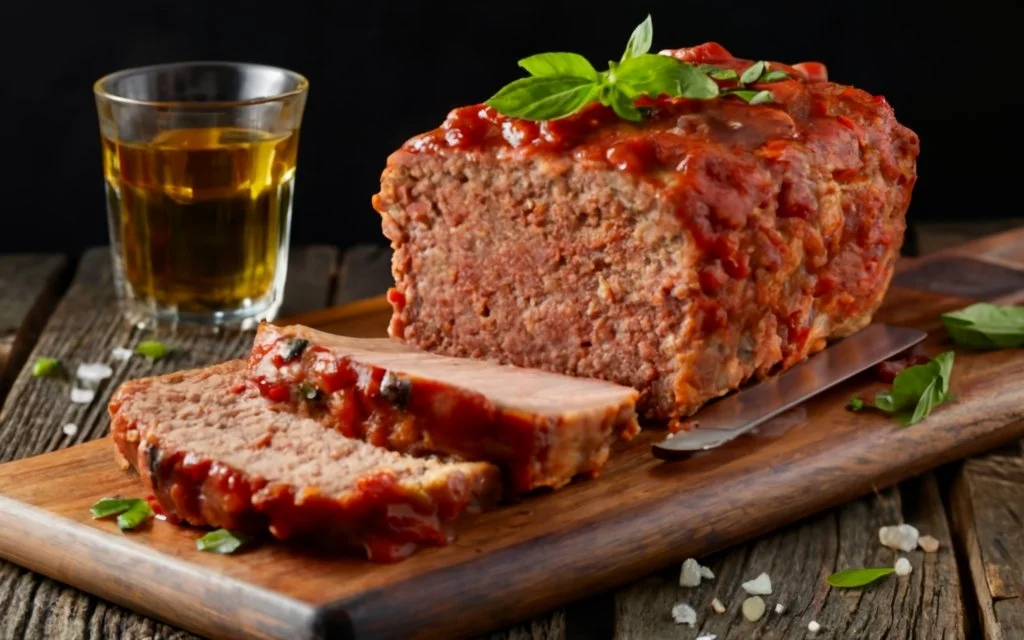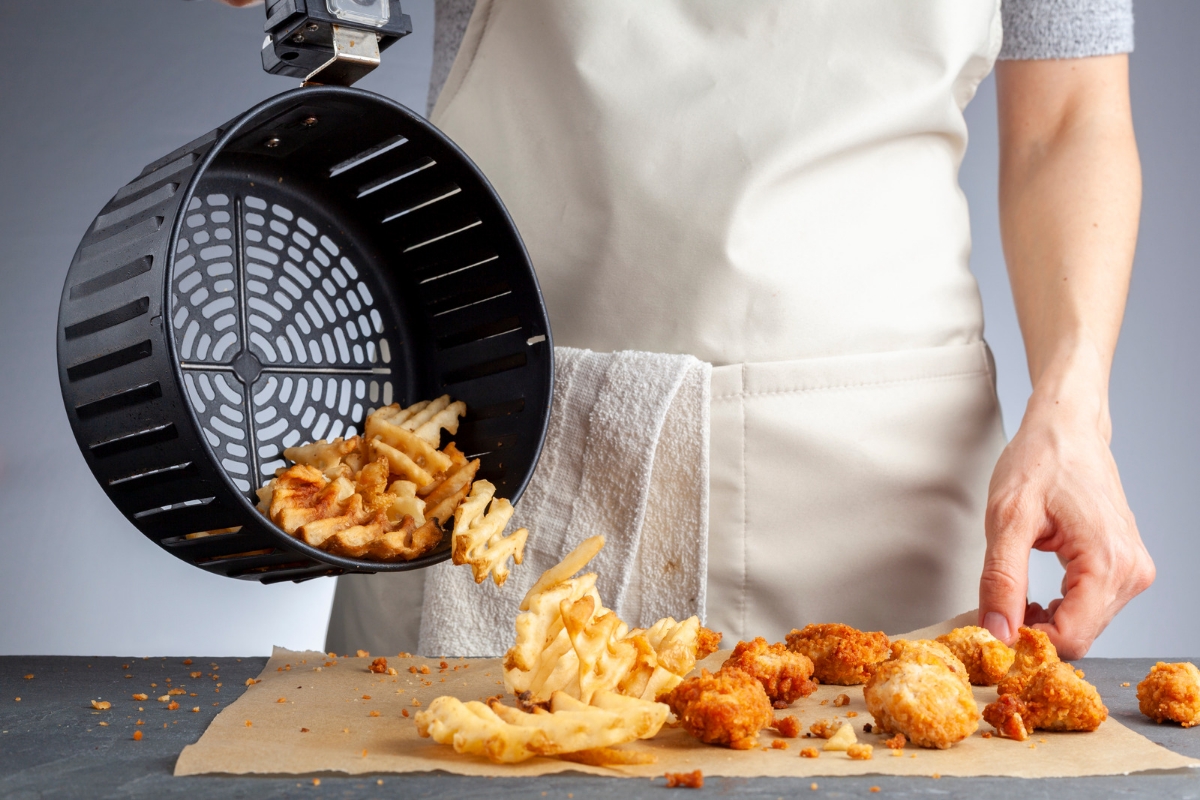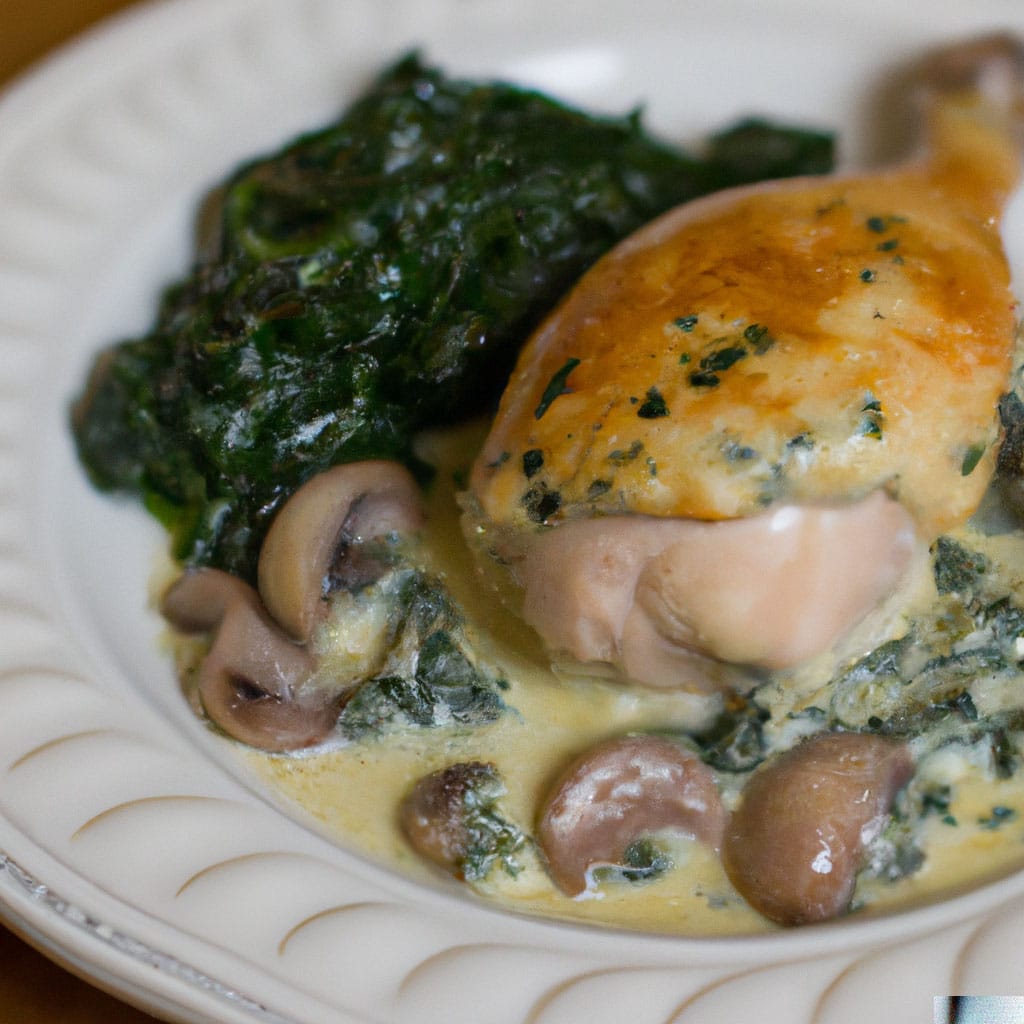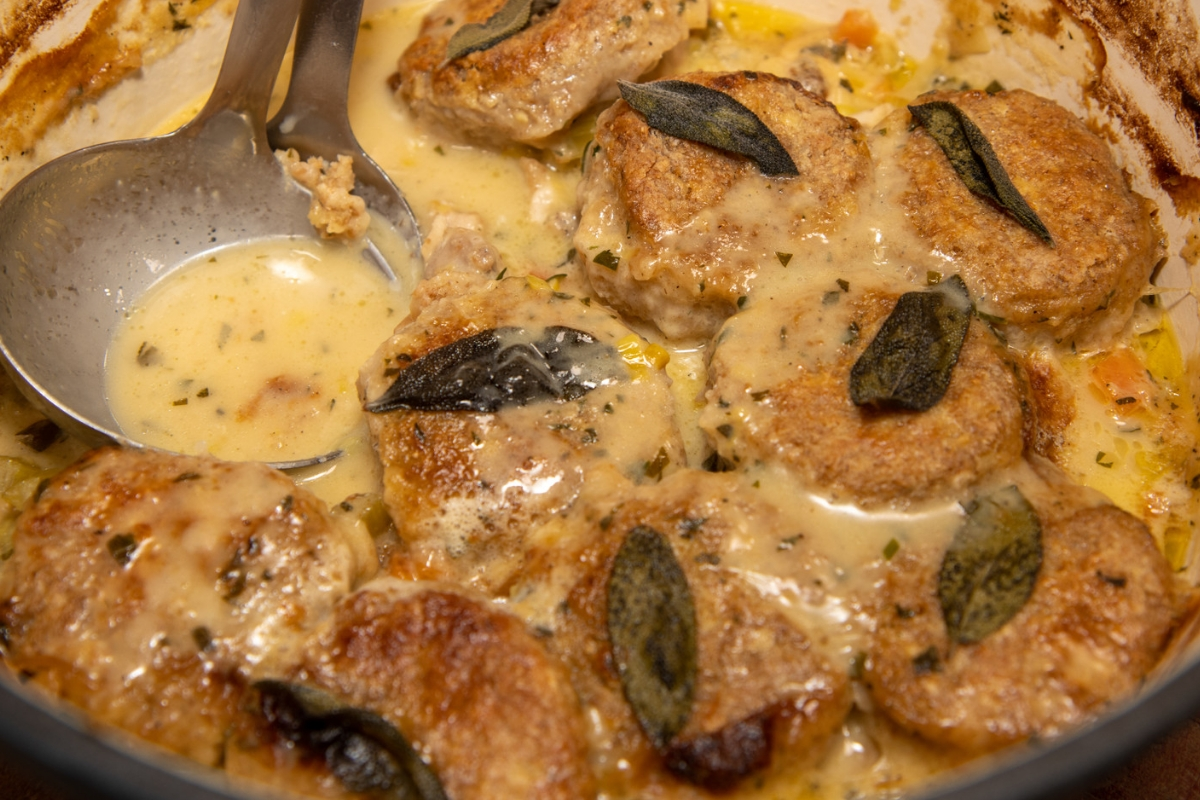Introduction
The Classic Comfort of Meatloaf
Meatloaf, a quintessential American comfort food, has graced dinner tables for decades, evolving from a simple meat dish to a beloved family staple. Its origins trace back to European culinary traditions, adapted by American home cooks into the hearty, versatile meal we know today. For more on the history and cultural significance of meatloaf, visit Meatloaf – Wikipedia. Meatloaf’s appeal lies in its simplicity and the nostalgia it evokes, reminding us of home-cooked meals and gatherings with loved ones. It’s a dish that offers a canvas for creativity while maintaining its comforting essence. The addition of ingredients like Lipton Onion Soup Mix has given this classic an extra layer of flavor and convenience, ensuring its continued popularity in kitchens across the nation.
A Brief History of Meatloaf

The history of meatloaf begins in Europe, with recipes dating back to the 5th century. It became a popular way to stretch scarce resources, mixing leftover meat with fillers like bread and spices. As immigrants brought their culinary traditions to America, meatloaf found a new home. During the Great Depression, its ability to combine inexpensive ingredients into a filling meal solidified its place in American cuisine. Over the years, it has been adapted and reinvented, reflecting the changing tastes and innovations of home cooks.
Why Lipton Onion Soup Mix?
Lipton Onion Soup Mix has become a beloved shortcut for adding rich, savory flavor to meatloaf. Its blend of onions and seasonings enhances the meat’s natural taste, creating a deliciously moist and flavorful dish. This simple addition transforms the traditional meatloaf into a mouthwatering meal with minimal effort.
For a detailed recipe using Lipton Onion Soup Mix in meatloaf, check out our Lipton Onion Soup Meatloaf article.
Ingredients and Preparation
Gathering Your Ingredients
Before embarking on your culinary journey to create the perfect Lipton Onion Soup Mix Meatloaf, it’s essential to gather all the necessary ingredients. This ensures a smooth preparation process and a delicious outcome. Start with the basics: ground beef, which provides the foundation for your meatloaf. Next, the star of the show, a packet of Lipton Onion Soup Mix, infuses the meat with a rich, savory flavor. You’ll also need breadcrumbs to help bind the mixture and maintain moisture,
and eggs to act as a further binding agent. Ketchup adds a tangy sweetness, while water is required to dissolve the soup mix and integrate it evenly. Optional ingredients might include Worcestershire sauce for depth, and herbs like thyme or sage for a personal touch. As you gather these ingredients, consider their quality and freshness, as they significantly impact the flavor and texture of your final dish. With everything on hand, you’re ready to create a meatloaf that’s both comforting and flavorful.
Essential Ingredients for the Perfect Loaf
The perfect meatloaf calls for a balance of essential ingredients. Ground beef, preferably a mix of lean and fat, provides the base. Lipton Onion Soup Mix offers a complex flavor profile, eliminating the need for multiple seasonings. Breadcrumbs or another binder like oatmeal ensure the loaf holds together and remains moist. Eggs act as a binding agent, keeping the ingredients unified. Ketchup or tomato paste contributes a tangy sweetness, enhancing the overall taste. Lastly, water or broth is crucial for dissolving the soup mix and evenly distributing its flavors throughout the meatloaf.
Choosing the Right Meat
Selecting the right meat is crucial for a flavorful and moist meatloaf. While ground beef is traditional, a blend of meats can elevate the dish. Consider mixing beef with pork or veal for added richness and depth. The fat content is also essential; a ratio of 80% lean to 20% fat is ideal for a moist, tender loaf without being overly greasy. If using leaner meats, compensate by adding ingredients like sautéed onions or bell peppers to maintain moisture. Remember, the quality of the meat directly influences the taste and texture of your meatloaf, making it a critical choice in your preparation.
Mastering the Lipton Onion Soup Mix Meatloaf: A Step-by-Step Guide
Creating a delicious Lipton Onion Soup Mix Meatloaf involves a series of simple yet crucial steps. From mixing the ingredients to shaping and baking your loaf, each stage contributes to the final taste and texture of this classic comfort food. Follow these guidelines to ensure a moist, flavorful meatloaf that’s sure to be a hit at any family gathering or dinner.
Mixing the Ingredients
Begin by preheating your oven to the recommended temperature, usually around 350°F (175°C). In a large mixing bowl, start by beating the eggs. They will help bind all the ingredients together. Add the packet of Lipton Onion Soup Mix to the bowl, ensuring its flavors will be evenly distributed throughout the meatloaf. Pour in water and ketchup, mixing well to combine all the wet ingredients. Now, gently fold in the breadcrumbs, which will absorb moisture and help maintain the loaf’s structure. Finally, add the ground meat to the bowl. Use your hands or a fork to mix everything together, but be careful not to overmix, as this can lead to a dense meatloaf. The mixture should be well combined but still light enough to hold its shape.
Shaping and Baking Your Meatloaf
Once your mixture is ready, it’s time to shape your meatloaf. Transfer the mixture to a lightly greased baking dish or loaf pan. Shape it into a loaf, ensuring it’s even but not too compact. Before placing it in the oven, you can add a layer of ketchup or barbecue sauce on top for extra flavor and a glaze-like finish. Bake in the preheated oven for about 1 hour to 1 hour and 15 minutes. The meatloaf is done when it’s no longer pink in the center, and a meat thermometer inserted into the center reads 160°F (71°C). Once baked, let it rest for about 10 minutes before slicing. This resting period allows the juices to redistribute, ensuring your meatloaf is moist and flavorful when served.
For the original recipe version, visit our Original Lipton Onion Soup Meatloaf Recipe page.
Cooking Tips and Tricks
Mastering Meatloaf Perfection
Creating the perfect meatloaf is an art that combines the right ingredients with the best cooking techniques. While the recipe might seem straightforward, a few tips and tricks can elevate your meatloaf from good to great. Understanding how to maintain moisture, the importance of cooking times, and the right oven temperatures can make all the difference. These guidelines are designed to help you master the art of making meatloaf, ensuring a delicious, tender result every time.
Discover more about keeping your meatloaf moist in our article on What is the Secret to Moist Meatloaf?
Moisture is Key – How to Achieve It
One of the secrets to a succulent meatloaf is ensuring it remains moist throughout the cooking process. Start with the right mix of meats; a combination of lean and fatty meats can provide a good balance. Adding ingredients like sautéed onions, bell peppers, or even shredded carrots not only adds flavor but also moisture. The breadcrumbs or oatmeal you mix in will absorb and retain the juices as the meatloaf cooks. Be cautious with the mixing; overworking the meat can lead to a dense, dry loaf. Finally, consider topping your meatloaf with a layer of ketchup or a glaze before baking. This not only adds flavor but also helps to seal in the juices, keeping the meatloaf moist and delicious.
Cooking Times and Temperatures
The cooking time and temperature are crucial for a perfectly baked meatloaf. Generally, baking at a moderate temperature of around 350°F (175°C) works well. A standard-sized loaf will typically take about 1 to 1 1/2 hours. However, the exact time can vary based on the size and shape of your meatloaf. To ensure it’s cooked through, use a meat thermometer. The internal temperature should reach at least 160°F (71°C) for beef. If you notice the top browning too quickly, you can cover it loosely with foil to prevent burning. Remember, letting the meatloaf rest for about 10 minutes after taking it out of the oven is crucial. This allows the juices to redistribute, ensuring your slices are moist and flavorful.
Explore the science behind cooking the perfect meatloaf at Serious Eats.
Variations and Serving Suggestions
Creative Twists on a Classic Recipe
Meatloaf is a beloved classic, but that doesn’t mean it can’t be dressed up with some creative twists. Whether you’re looking to cater to dietary restrictions, add some extra nutrition, or simply shake things up with new flavors, there are plenty of ways to modify and serve this traditional dish. By experimenting with alternative ingredients and exploring different serving suggestions, you can transform the humble meatloaf into a gourmet meal that surprises and delights. Let’s dive into some innovative ideas that will inspire you to rethink this comfort food staple.
Alternative Ingredients and Substitutes
To cater to various dietary needs or preferences, consider alternative ingredients and substitutes. For a gluten-free version, replace breadcrumbs with rolled oats or almond meal. Vegetarians can enjoy a lentil or black bean loaf packed with herbs and spices. If you’re reducing red meat intake, try ground turkey or chicken for a lighter loaf. Enhance flavors with mix-ins like chopped mushrooms, sun-dried tomatoes, or feta cheese. For a healthier twist, incorporate grated vegetables like zucchini or carrots. Experimenting with different herbs and spices, such as Italian seasoning, smoked paprika, or cumin, can also give your meatloaf a unique flavor profile. These alternatives not only add nutritional value but also open up a world of taste possibilities.
Serving and Pairing Ideas
When it comes to serving meatloaf, the possibilities are endless. Classic sides like mashed potatoes and steamed green beans always work well, but why not try something new? Serve slices atop a bed of creamy polenta or alongside roasted root vegetables for a hearty meal. For a lighter option, pair with a crisp salad or sautéed greens. Meatloaf sandwiches are a delicious way to enjoy leftovers; just add a slice to toasted bread with your favorite condiments and toppings. If you’re feeling adventurous, create a meatloaf “stack” by layering slices with mozzarella and basil, then broiling until the cheese melts. These serving suggestions not only complement the flavors of your meatloaf but also add an element of excitement to the dining experience.
Nutritional Information
Understanding the Nutritional Profile
When indulging in the comforting flavors of Lipton Onion Soup Mix Meatloaf, it’s also important to understand its nutritional profile. This knowledge helps in making informed dietary choices and can guide those who are tracking their intake for health or fitness reasons. Meatloaf, traditionally made with ground beef and other ingredients, can vary in its nutritional content based on the specific recipe and portions. Generally, it’s a source of essential nutrients like protein, iron, and B vitamins, which are crucial for maintaining muscle health, energy levels, and overall well-being. However, it can also be high in fats and sodium, especially when prepared with certain mixes and sauces. By being aware of these factors and considering the ingredients used, you can enjoy this classic dish while keeping your nutritional goals in check.
Calories, Macros, and More
A typical serving of meatloaf made with Lipton Onion Soup Mix and ground beef contains a significant amount of calories, primarily from proteins and fats. The exact calorie count can vary, but it’s essential to consider it as part of your daily intake. Meatloaf is rich in protein, providing the building blocks for muscle repair and growth. The fat content, including both saturated and unsaturated fats, contributes to the dish’s flavor and texture but should be consumed in moderation.
Carbohydrates are present in smaller amounts, mainly from fillers like breadcrumbs and the sugars in ketchup. Additionally, meatloaf offers various micronutrients. Iron and zinc are notable for their roles in oxygen transport and immune function, while B vitamins support energy metabolism. However, it’s also important to be mindful of sodium levels, particularly if using pre-packaged soup mixes or sauces. Understanding these nutritional aspects allows you to enjoy meatloaf as part of a balanced diet, making adjustments as necessary to fit your health and lifestyle needs.
FAQs
Heading: Answering Your Meatloaf Queries
Meatloaf, with its rich history and countless variations, naturally comes with a host of questions from both novice and experienced cooks alike. From inquiries about cooking techniques to requests for recipe modifications, the “People Also Ask” section is a treasure trove of curiosity and culinary challenges. Addressing these frequently asked questions not only helps to demystify the process of making meatloaf but also enhances the cooking experience, allowing you to experiment with confidence and perhaps even discover new favorite methods. Whether you’re wondering about the best type of meat to use, how to ensure your meatloaf is moist and flavorful, or looking for creative serving suggestions, this section aims to provide comprehensive answers that will elevate your meatloaf game.
Common Questions and Expert Answers
Q: What’s the secret to a moist meatloaf?
A: The key to a moist meatloaf lies in the right balance of ingredients and cooking technique. Use a mix of lean and fatty meats, add moisture-retaining elements like breadcrumbs or oatmeal, and don’t overmix. Cooking it just until it reaches the safe internal temperature helps prevent drying out.
Q: Can I make meatloaf without eggs?
A: Yes, you can make meatloaf without eggs by using substitutes like mashed tofu, yogurt, or a flaxseed mixture to bind the ingredients together.
Q: How do I prevent my meatloaf from falling apart?
A: Ensure you have enough binding agents like eggs and breadcrumbs. Mix the ingredients until just combined, and let the meatloaf rest for a few minutes after baking before slicing.
Q: Is it better to cook meatloaf covered or uncovered?
A: Cooking meatloaf uncovered allows the top to caramelize and develop a delicious crust. If it’s browning too quickly, you can loosely cover it with foil towards the end of cooking.
Q: How can I tell when my meatloaf is done?
A: The most reliable method is to use a meat thermometer. The internal temperature should reach at least 160°F (71°C) for beef.
Q: Can meatloaf be made ahead of time?
A: Yes, you can prepare and shape the meatloaf then refrigerate it up to a day before cooking. You can also fully cook it and reheat it, making it a great make-ahead meal.
Conclusion
Wrapping Up the Meatloaf Journey
As we conclude our journey through the world of Lipton Onion Soup Mix Meatloaf, it’s clear that this dish is more than just a meal; it’s a canvas for creativity and a testament to the enduring appeal of comfort food. We’ve explored the origins, the preparation, and the many ways you can customize this classic dish to suit your taste and dietary needs. Meatloaf, with its rich flavors and simple preparation, remains a beloved staple in kitchens worldwide. It’s a dish that brings people together, evoking memories of family dinners and warm, hearty meals. Whether you’re a seasoned cook or just starting, the journey of making meatloaf is one of discovery, tradition, and, most importantly, taste.
Final Thoughts and Encouragement to Experiment
As you move forward with your culinary explorations, remember that the essence of great cooking lies in experimentation and personalization. Don’t hesitate to put your spin on the classic meatloaf recipe. Play with different meats, mix-ins, and seasonings. Consider the nutritional aspects and make adjustments to fit your lifestyle. And most importantly, share your creations with friends and family. Each variation, each meal, is an opportunity to create new memories and traditions. So, take what you’ve learned about Lipton Onion Soup Mix Meatloaf, and let it inspire you to craft a dish that’s uniquely yours. Happy cooking, and may your meatloaf journey be as fulfilling as it is delicious!




